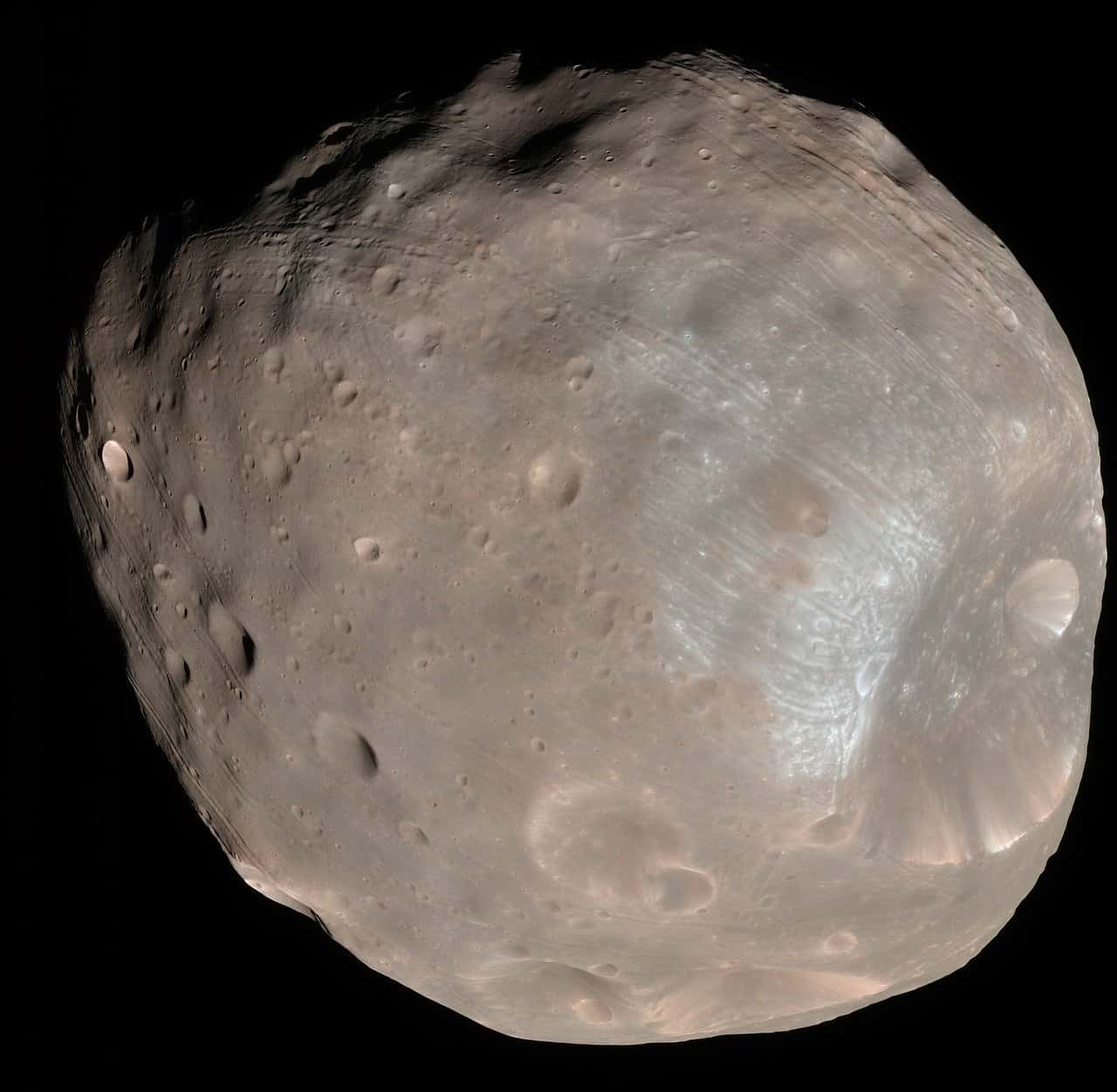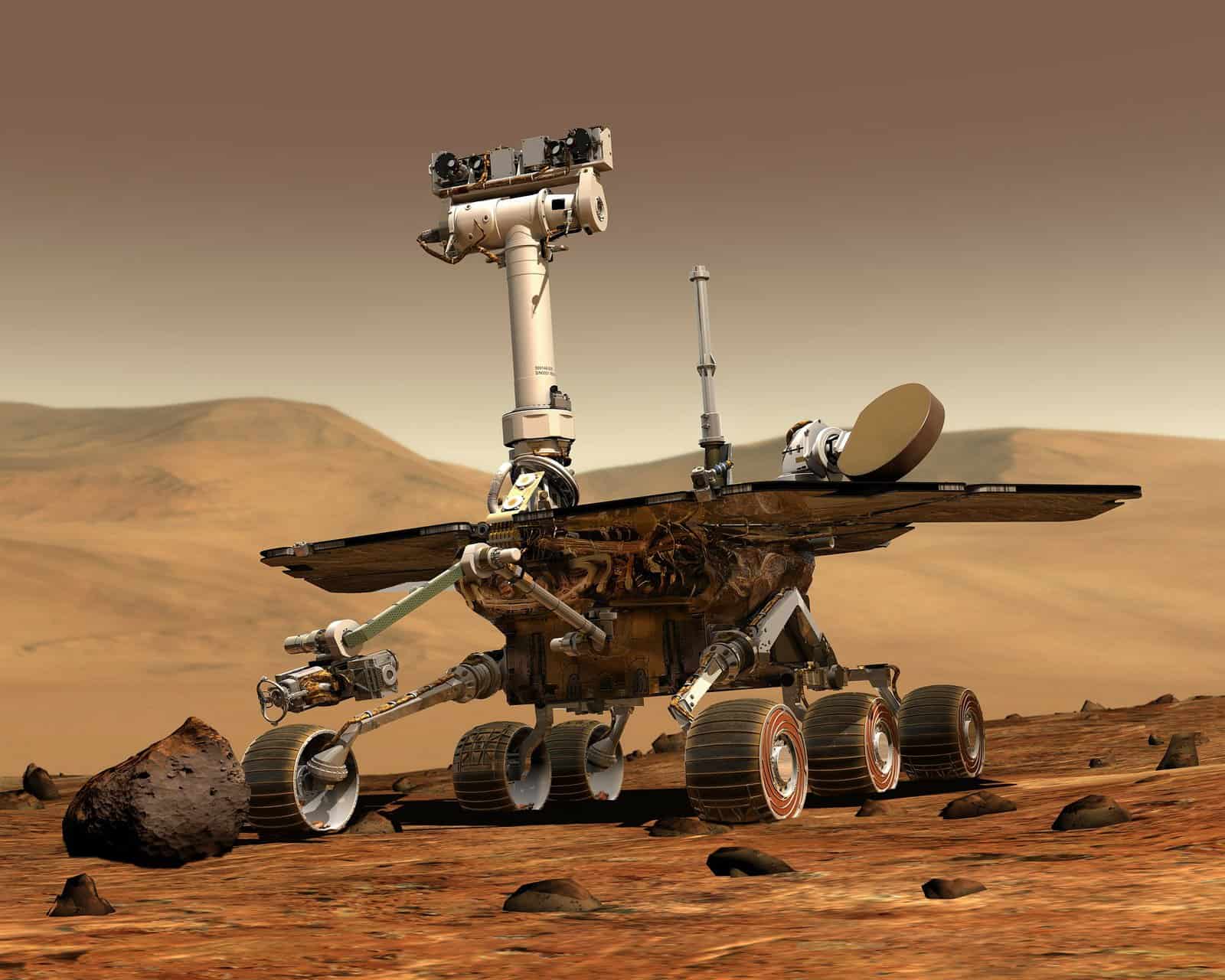
Not Just A Chocolate Bar! Explore the Red Planet Mars
Do you know which planet is called the Red Planet? It is Mars. Mars is one of the planets that orbit the Sun in the solar system. In fact, it is one of the most impressive planets. It is known for its distinctive red sheen.
Mars is the fourth planet from the Sun, and it is the second smallest planet in the solar system, after Mercury. It is also Earth’s outer neighbour. It orbits, or travels around, the Sun at an average distance of about 228 million kilometres. In general, we can describe Mars as a cold desert world. Let’s find out why!
Surface and Structure
Mars is a terrestrial planet. It is small and rocky. Terrain on Mars is the most varied and complex terrain of any other terrestrial planets, except for Earth. Mars has layers like those of Earth. The layers consist of a metal core, a rocky middle, and a crust. The surface consists of rock and dust. There are many large dust storms. There are many pits on some parts of the planet, called craters. As for the landscape, it includes high mountains, valleys and plains.
Mars has a mountain named Olympus Mons, and it is the biggest mountain in the entire solar system. This mountain is 24 kilometres high. This is three times bigger than the largest mountain on Earth, which is Everest. The third largest canyon in the solar system, named Valles Marineris, is also found on Mars. This canyon runs 4,000 kilometres long, and it stands 2 to 7 kilometres tall. It is located in the southern hemisphere of the planet, and it is over 6 km deep and 2000 km across.
There is water on Mars in the form of ice caps at the north and south poles. There is also ice beneath Mars’ surface. In addition, there are small amounts of water in the form of gas in the air. There might have been oceans and lakes on Mars long ago. Some scientists believe that water exists underneath Mars’ surface. Some scientists also think that Mars was once a warm planet with large seas.
Atmosphere and Temperature
Mars has a thin atmosphere. It consists mostly of carbon dioxide. It does not store much heat. Because of this, temperatures on the surface of Mars change from lows (about −143 °C) to highs (about 35 °C). The temperature at the surface of Mars is about −33 °C in the afternoon, but it cools to about −83 °C before dawn. In addition, Mars is 1.52 times as far from the Sun as Earth. So, only 43% of the amount of sunlight that reaches Earth can reach Mars.
Orbit and Rotation
Mars, like all planets, has two types of motion: orbit around the Sun, and spin about its centre. Mars completes one orbit around the Sun in 687 Earth days. So, a year on Mars lasts 687 Earth days.
Mars spins about its centre at nearly the same speed as Earth does. It completes one rotation in 24 hours and 37 minutes. So, a day on Mars lasts about as long as an Earth Day.
In addition, Mars rotates on a tilted axis, just like Earth does. As a result, Mars has four different seasons. They are also so much like the seasons of Earth. However, the lengths of the seasons of Mars are almost twice those of Earth because Mars is farther from the Sun than Earth, which makes a year on Mars almost two Earth years long.
Size
Mars is a small planet. It is the second smallest one among all planets in the solar system, after Mercury. It is just 30% bigger than Mercury. Its diameter is 6,791 kilometres, which is half the size of Earth. Jupiter, which is the biggest planet in the Solar System, has more than 20 times the diameter of Mars.
Colour
While it is known for its red hue, Mars is filled with a multitude of colours like gold, tan, and brown. Mars is called the “Red Planet” because its colour is red. But why is Mars red?
First, the rocks and soil on the surface of Mars contain dust that is made up of iron. Wind and volcanoes helped blow out the iron and spread it all over the planet. Then, the iron reacted with oxygen, which turned it into a reddish rusty colour. So, Mars is red because of the layer of rusty dust that covers its entire surface.
In addition, Mars has some of the largest dust storms in the galaxy. Those storms whip the red dust into the thin atmosphere that surrounds Mars, which makes the sky of Mars look red.

Moons
Mars has two tiny moons which are called Phobos and Deimos. Both were discovered by American astronomer Asaph Hall in August 1877. Both moons are so tiny and irregular in shape that they even look more like asteroids than moons. In fact, they are some of the smallest moons in the solar system.
Phobos is the larger one. Its diameter is about 22 kilometres. It orbits Mars from a distance of about 6,000 km, and it takes about 7 hours to complete its orbit. So, it travels around Mars three times a day, and it appears in Mars’ sky once every four hours. Phobos appears to travel around Mars from west to east.

Deimos is smaller than Phobos. Its diameter is only about 13 kilometres. It also orbits Mars much farther away than Phobos. The distance between Deimos and Mars is about 20,069 kilometres. So, it takes about 30 hours to complete its orbit around Mars, which is a little more than a day on Mars.
Name
Planet Mars is named after the Roman god of war. It was named so because of its red colour, which is associated with war, battles, and blood. Mars’ moons are named after the Greek mythological twin characters Phobos (fear) and Deimos (terror and dread) who accompanied their father, Ares, into battle. To the Romans, Ares was known as Mars: the god of war.
Discovery and Exploration
People have known Mars since ancient times because it can be seen from Earth without telescopes. In addition, many spacecrafts have visited Mars to explore the planet. However, humans have not been to Mars yet.
From the 1960s to the 1980s, the United States and the Soviet Union each sent several spacecraft to Mars. Some of them flew past Mars or orbited it. In 1976, the Viking Landers landed on Mars, and they were the first spacecraft to touch the surface of Mars.
Since the 1990s, the United States and other countries have sent many spacecraft to orbit Mars. They included:
- The U.S. Mars Global Surveyor in 1996
- 2001 Mars Odyssey
- The European Space Agency’s Mars Express in 2003
- India’s Mars Orbiter Mission in 2013
- The United Arab Emirates’ Hope that was launched in 2020 and entered Mars’ orbit in 2021
- China’s Tianwen-1 which entered Mars’ orbit in 2021.
In addition, Mars is the only planet that we have sent rovers to. Rovers are robots that drive around the planet and take pictures and measurements of it, and they move around the surface and perform experiments there. They included:
- The U.S. spacecraft Pathfinder which landed on Mars in the 1990s, and released a rover on the surface.
- The United States sent two more rovers to Mars in 2003, called Spirit and Opportunity.
- A fourth rover, called Curiosity, landed on Mars in 2012.
- In 2021, a U.S. rover named Perseverance landed on Mars. Its main mission was to look for signs that could help find out if there was life on Mars anciently. A small helicopter was attached to the rover, named Ingenuity, and it was released on the surface after the rover had landed. Ingenuity made its first flight in April, and it was the first flight of an aircraft on a planet other than Earth to be power-controlled.

20 Interesting Facts about Mars
- Mars is visible to the naked eye, so you can see it without the use of a telescope or binoculars.
- Mars is very similar to Earth, and scientists are trying to find out if Mars has ever had living things in the past. They also want to know if Mars could support life now or in the future.
- There are seasons on Mars just like those we have on Earth, but they last longer on Mars. Those seasons also vary in length because Mars’ orbit around the Sun is egg-shaped.
- The season that lasts the longest on Mars is spring. It lasts for 194 days.
- The shortest season on Mars is Autumn, and it lasts only 142 days.
- The storms on Mars are a great obstacle for the spacecraft sent there.
- One of Mars’ moons, which is Phobos, will crash on Mars in the future, and this may create a ring system around Mars.
- The Sun on Mars appears about half its size that we see on Earth.
- There are pieces of Mars that have fallen on Earth, and scientists are studying these materials to this day.
- If you would weigh 100 kg on Earth, you would weigh 38 kg on Mars because Mars’s gravity is only 38% that of Earth.
- On Mars, you could jump three times higher than you can do on Earth because the gravity of Mars is much weaker than that of Earth.
- The name of the month March is derived from planet Mars.
- It would take around six planets the size of Mars to fit the size of Earth.
- It would take around 7 million planets the size of Mars to fit the size of the Sun.
- The atmosphere of Mars is too thin to protect it from meteors, which are the reason for so many craters on the surface of Mars.
- Some believe that the large canyon named Valles Marines on Mars is the result of a huge collision.
- Winds on Mars are sometimes strong enough to create dust storms, and it can take months for all the dust to settle.
- The dust in the atmosphere of Mars makes sunsets on the planet a little blue.
- Mars represents masculinity, and the symbol of the planet is the symbol used for the male gender.
- Jonathan Swift mentioned the two moons of Mars in one of his books 151 years before they were actually discovered.
Comparison Between Mars and Venus
Mars has an impressive atmosphere that is made up of 95% carbon dioxide, which is similar to the atmosphere of Venus. Venus has an atmosphere that consists of 97% carbon dioxide. However, Venus and Mars are different in terms of temperatures. The greenhouse effect present on Venus makes temperatures incredibly hot, reaching over 480 degrees Celsius. On Mars, in comparison, temperatures never go higher than 20 degrees Celsius.
Temperatures on both planets differ according to the density of their atmospheres. Mars has a fragile atmosphere, whereas Venus’s atmosphere is very thick. This atmosphere is the same reason that scientists believe there has been a loss of liquid water that once existed on the planet’s surface.
Checkout more planet facts for kids.
Why not subscribe to our LearningMole Library for as little as £1.99 per month to access over 1000 fun educational videos.


Leave a Reply